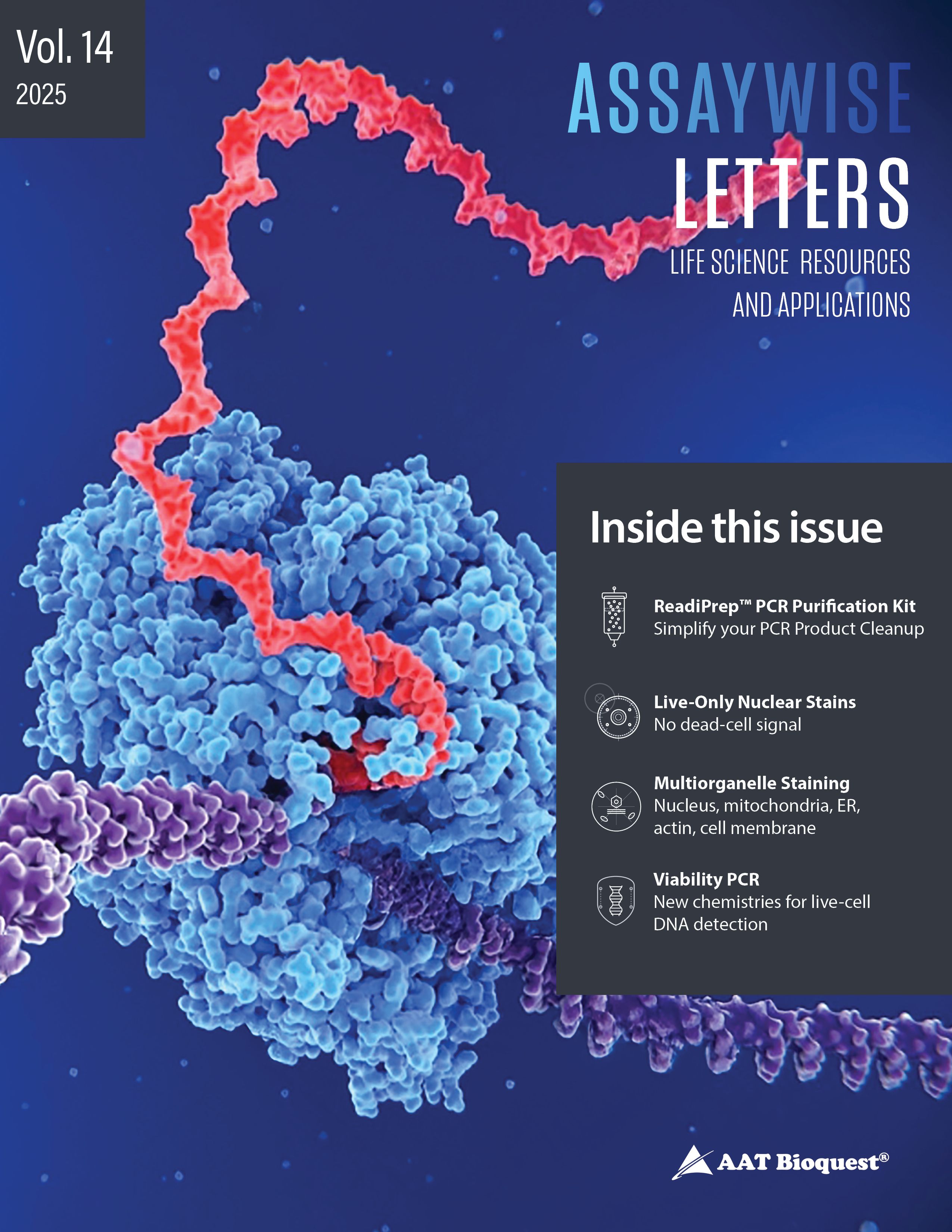AssayWise Letters 2021, Vol. 10(1)
Table of Contents
Low-cost, Ultra-sensitive Fluorescence Detection of DNA by Gel Electrophoresis Using Environmentally Benign Gelite™ Safe DNA Gel StainEnzymatic and Chemical Labeling Strategies for OligonucleotidesSensitive Identification of Newly Synthesized DNA in Situ Using Click Chemistry-based Bucculite™ XDU Cell Proliferation AssaysA Practical Guide for the Detection and Analysis of PCR ProductsFeatured Articles
Overview of DNA Extraction Methods
Fundamental DNA extraction techniques for PCR, sequencing, southern blotting, genomic libraries and genetic polymorphism applications
A Practical Guide for Labeling Antibodies
Methods for labeling antibodies with amine-reactive or thiol-reactive tags for immunofluorescence, flow cytometry, and other applications
Fundamentals of Flow Cytometry
Exploration of flow cytometry principles and guidance on selection of fluorophores
A Practical Guide for Use of PE and APC in Flow Cytometry
Overview of PE and APC usage in flow cytometry, with examples for panel design and experimental methodology
Browse by Article
Title | Description | Published On | AssayWise Issue |
|---|---|---|---|
Silica column-based kit for purifying PCR products in under 10 minutes, removing primers, enzymes and dNTPs for downstream applications | 2025-09-10 | AssayWise Letters 2025, Vol. 14(1) | |
Psoralen-based (vPCR 350) and minor groove binding (vPCR Star) chemistries improving viability PCR live-dead discrimination over PMA | 2025-09-10 | AssayWise Letters 2025, Vol. 14(1) | |
LiveONLY™ Nuclear Green™ and Nuclear Red™: Cell-permeant dyes for exclusive nuclear staining of viable cells with no signal in dead or fixed cells | 2025-09-10 | AssayWise Letters 2025, Vol. 14(1) | |
Multiplex staining workflow visualizes five organelles in HeLa cells using spectrally distinct dyes for high-content imaging applications | 2025-09-10 | AssayWise Letters 2025, Vol. 14(1) | |
Non-enzymatic nucleic acid labeling for DNA, RNA, and oligonucleotides, with six fluorophore options for multiplexing | 2024-05-01 | AssayWise Letters 2024, Vol. 13(1) | |
Browse by Issue
Browse by Resource

























